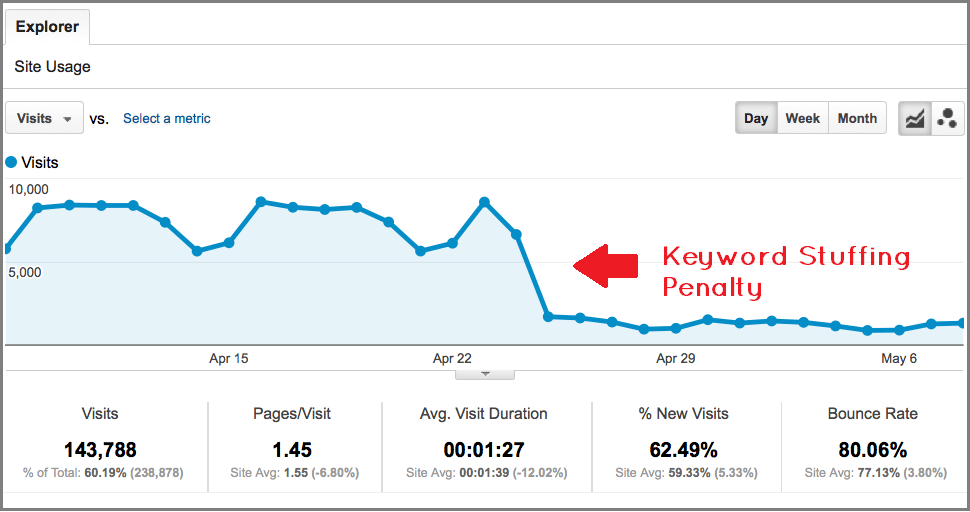Keyword stuffing is a method of search engine optimization where the keyword you want to rank for is spammed into your content. Most of you who have been using the Internet long enough may remember that there was a time when you would end up on websites that had the same word over and over again with no valuable information.

Does keyword stuffing still work?
Search engines
Search engines have changed and will continue to change their algorithms for the very reason stated above. There will be people who try to find a loophole and exploit it. In SEO we call these methods “black hat”. Let’s take the example of keyword stuffing: In the past, there was a time when this worked very well, but as soon as the algorithm was changed, these websites were screwed and had to find new strategies. If you’re looking for a long-term strategy, you should always put value and user experience first, because exploiting loopholes may get you faster results, but in the long run you’ll lose everything or even be penalized for it.

Search engines want you to focus on creating useful content and content that uses keywords, but not spamming! Do you like websites like this? Do you like spam? No, so you should not produce it either.
Keyword density
Let’s say you have a specific keyword you want to rank for, and you want to write content that is optimized for that keyword. This is where keyword density comes into play. Keyword density is basically the percentage of times the keyword appears in your content. Let’s take an example: you write an article with 1000 words and use your target keyword 25 times. Your keyword density would then be 25/1000 = 2.5%.

What would be the recommended density? Well, it depends. The thing about SEO is that there are some things you shouldn’t do these days, but when it comes to details, it matters. SEO should focus very much on competitor analysis! So look at what others are doing and have a similar keyword density. To give you a number, 1-2% should be targeted (because that’s natural). Keyword stuffing would mean that most of your content is just your keyword. Do not overdo it! Write for people, not for the algorithm.
Useful, information-rich content
Creating useful, information-rich content is what you should focus on! Bring added value to website visitors. Take this blog, for example: I try to pass on the information I have learned to you. I’m trying to teach you something so you’ll be able to avoid black hat SEO and focus on writing quality content. But you also need to optimize your content. You can have the best content, but if no one gets to see it, it’s not worth much. That’s what SEO is all about: helping others get noticed via search engines by optimizing various things.

So focus on creating information-rich content that uses keywords appropriately. Focus on creating a good experience. Write the things you would like to read! Create content that you would share with your friends, create content that you can be proud of.
Avoid Keyword Stuffing
You should definitely optimize your content for specific keywords to get noticed by search engines, but avoid keyword stuffing. Keyword stuffing can get your site penalized, and no one likes spam. You can also use variations of your keyword, use synonyms, etc. Write as you normally would, but with a specific intention in mind. As you read this article, you will notice that there are certain keywords that are repeated, but ultimately the point is to get the message across about what keyword stuffing is and that you should avoid it.